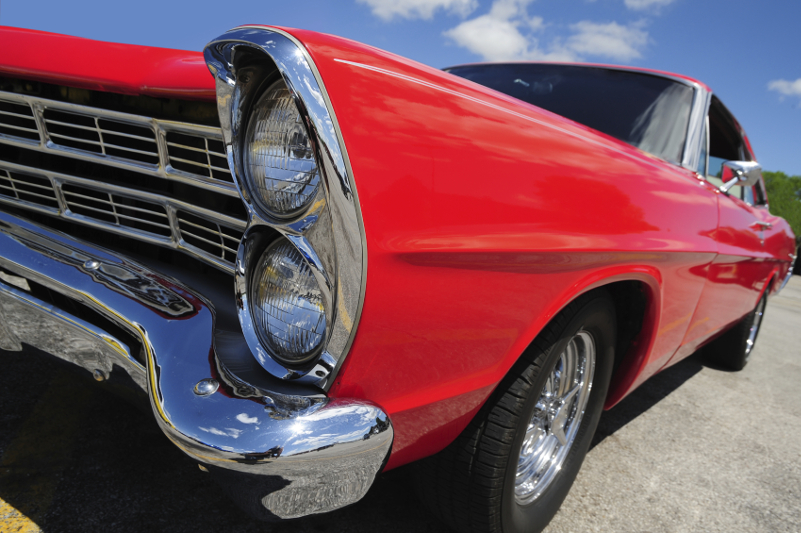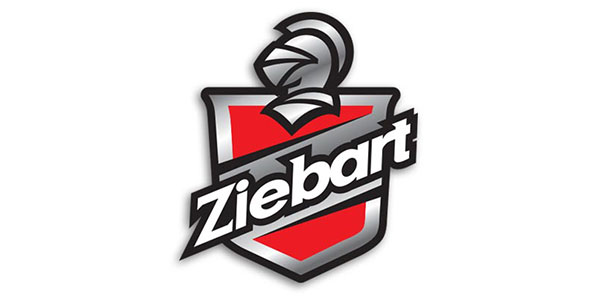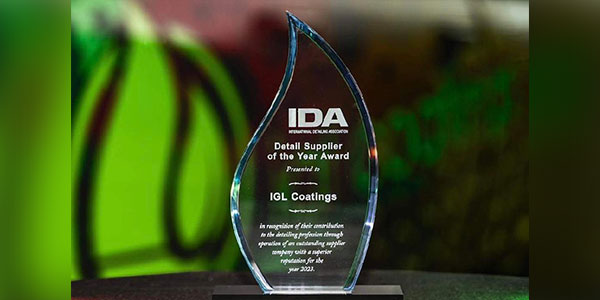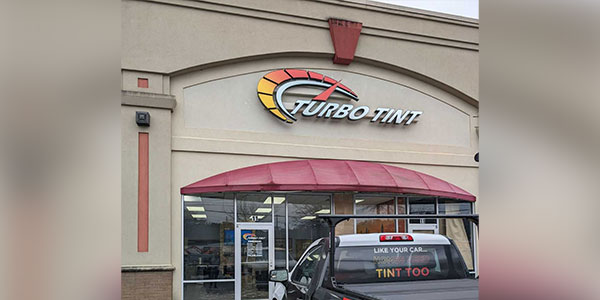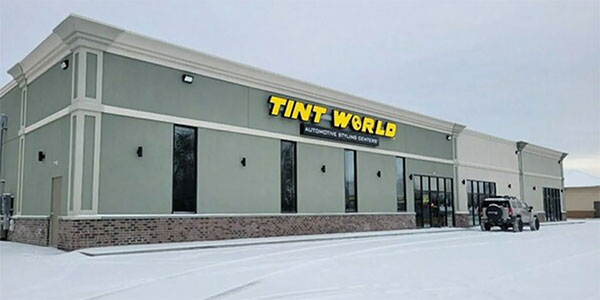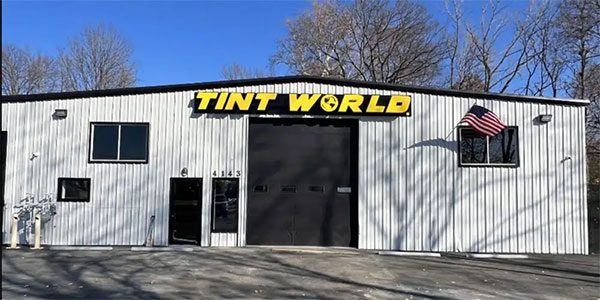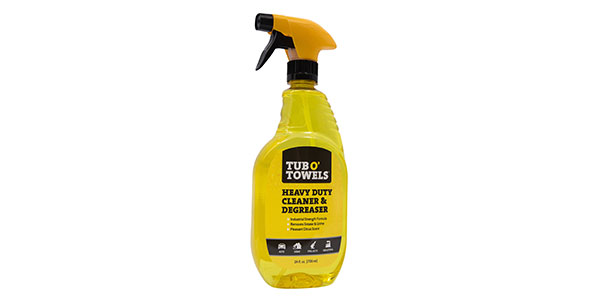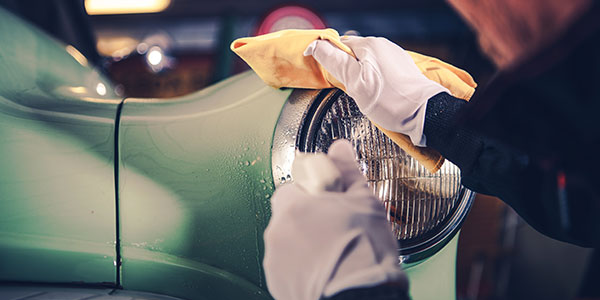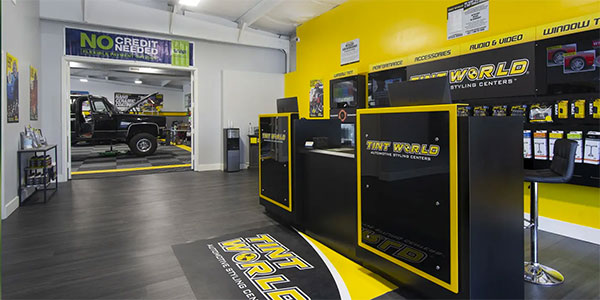Thirty years ago, the trim on most cars was chrome. It was shiny and strong. It added flair and color to the old classic. However, the chrome days of old have moved over for today’s vinyl and other plastics. The trim of any vehicle is the final statement in overall presentation.
Trim
In recent years, black plastic trim has become popular among auto manufacturers, especially sport utility vehicles and pick-up trucks. All these vehicles have two things in common:
- They have black molding either over the wheels, or on the front, or both; and
- They’re rugged, off-road vehicles that incur more abuse than your average sedan.
For these two reasons, you have to apply protectant to this trim. If you don’t, it’ll turn gray faster than you can say “unhappy customer.”
Trim that has not been maintained will become polluted, dry, and worn, thus taking away from the appearance of the whole car. Well-maintained trim stands out and makes a statement so that the whole car looks like the metallic version of a well-groomed, derby-winning racehorse.
It is important to protect the plastics and rubber from harmful ordinary oxygen, ozone, and UV light, since they cause destruction that will crack and discolor these materials. But before you protect the trim, it needs to be clean. Cleaning will ensure that no stains are set in, and that the protectant/dressing used will adhere better to the surface and last longer.
The appearance provided by exterior plastic/rubber protectants varies from flat matte to gloss, with lots of stops in between. Some people like a matte or more natural appearance, while others consider a high-gloss, shiny look attractive. The choice depends on the customer’s personal taste, so when I use terms like matte or gloss, picking among the possibilities is very subjective. Most high-gloss products are based upon raw silicone oil.
As always, there are exceptions to these rules. The exact products and procedures that you use will depend upon many factors including regulation requirements, available chemicals, and your knowledge and experience. The following will give you some general information as a foundation upon which to develop your own preferred procedures.
Cleaning
Most unpainted trim is plastic or rubber; it includes decorative side panel trim, window seals, and the housings on many side view mirrors. If the vehicle is a newer, well-maintained vehicle, no extra cleaning of these surfaces is necessary aside from the general wash.
If the car is older or not well maintained however, clean the trim using a scrub sponge or a soft-bristled brush with a mild-to-medium-strength citrus-based all-purpose cleaner. You can usually dilute 40 parts cleaner to 60 parts water. Be aware that strong or under diluted cleaners can stain the painted panels that surround the trim being cleaned.
A very soft polypropylene brush will be very effective at cleaning these surfaces without scratching the bordering painted panels. We have all seen plastic molding that has old dried-wax residue; this white residue is not only unsightly but also contributes to drying out the plastics. It can be difficult to clean. I use isopropyl alcohol, or a brand name body solvent.
Dressing protectants
There are several dressings available for the exterior. Personal experimentation will help you determine which to use. For example, solvent-based dressings will last longer (but might not meet regulations in your area), especially on rubber surfaces; water-based dressings on trim areas may be perfectly sufficient, especially for express or frequent detailing.
It is important to determine your customer’s preference: high-gloss or other. There are several silicone-oil-based products on the market that will give your plastic that shinny effect if that’s what your client is looking for. I prefer low-gloss, or at least something that will not rub off on my customer’s clothes. (Note: a final wipe of the tires with a dry cloth usually removes excess dressing that may rub off on clothing.)
Application
Spray dressing on applicator and spread on all plastic. Wipe dressing on trim parts with a damp sponge or with a foam applicator, moistened with dressing. Take your time and be thorough; sloppy dressing is very noticeable, just like sloppy house painting. It is important to dress all rubber and plastic exterior trim (prior to polishing and waxing painted surfaces).
If the customer’s textured black plastic is heavily weathered or faded, you can bring it back to life with a trim re-conditioning product. Products such as these restore faded black bumpers and trims to a like-new condition.
Masking may not be necessary: (check Manufactures label) it adheres only to porous plastic and rubber. It’s advertised as a permanent solution, but in my experience it will last only a couple of years if the vehicle spends a lot of time in the sun. Also, don’t think this is a replacement for dressing. It’s not. After it cures, you still need to keep the trim protected and looking good with a plastic and rubber dressing.
Other trim materials
Anodized aluminum must be treated with great care. The coating is very thin. Even the mildest abrasives (polish and cleaners) will quickly scuff or remove the coating. The sun is a problem, too, as exposure to UV rays will fade black anodized trim.
Painted black trim is often difficult to maintain properly. If you wax it, the original satin finish will begin to take on gloss. If you don’t treat it, the trim will fade and become flat.
The best solution I’ve found is to treat with satin black trim protectant (windshield wipers are a good example). These types of products are amazing on these trim areas, offering a natural satin finish. It also wipes off to a greaseless finish and won’t soften the black paint. To use, simply spray on applicator and apply thoroughly; buff dry after applying.
Rubber seals
Rubber and moldings around windows, doors, lights, hood, trunk, and bumpers are designed to protect the car from water, wind, and dirt. These rubber components also trim the car to enhance its appearance.
If you do not maintain rubber seals, they will become stiff and brittle, and will eventually crack or tear. Clean rubber seals for door, trunk, and hood with soap and water. Treat the seals with a water-based rubber dressing. After coating the seals, allow the dressing to penetrate for 10 to 15 minutes, and then dry the seals with a clean towel.
Some high-end car manufacturers recommend using talcum powder on door and hood seals to provide lubrication. This will extend the life of the door seal. Simply sprinkle a small amount of talcum powder on a piece of cloth and wipe it onto the seal after applying rubber and vinyl dressing. Rubber seals around windows, lights, door handles, and mirrors should also be cleaned using a brush and soapy water. However, these exposed rubber seals should be treated more frequently than door and hood seals, as they get heavy UV radiation from the sun.
Badges and emblems
Many cars have badges or emblems sporting the manufacturer’s crest or the name of the automobile. These badges are easily cleaned with a soft toothbrush or detailing brush and soapy water. Car-name emblems are often more difficult to clean and wax than badges. Most often, the emblem is a script that sits right on the paint.
Waxing around these emblems is a challenge, as a polishing cloth won’t reach between the letters to remove wax residue. The problem isn’t only polishing around letters; it is also polishing inside parts of letters, for example, the letter ‘o.’ In this case, use a detailing component cleaning head and a microfiber towel to help clean tight, hard-to-reach areas that cannot normally be reached by using conventional tools or by hand.
It’s all in the details
It’s the small details that make the difference between a good-looking car and one that’s stunning. At the Monterey Concours Italiano last year, I couldn’t help but notice how the beautifully restored cars had polished and treated trim that made for a stunning display, especially on some of the exotic cars.
Pay special attention to the trim, and see what a big difference it makes in the final appearance of your customers’ cars. They will be saying, “Wahoo!” and returning to your business for years to come.
Jim Pyatt is the owner of Tender Rubbing Care, published author and consultant. Jim has over 10 years experience as a detail shop owner operator, and is a member of The National Association for Professional Detailing and Reconditioning (NAPDR). He can be reached at: [email protected]

